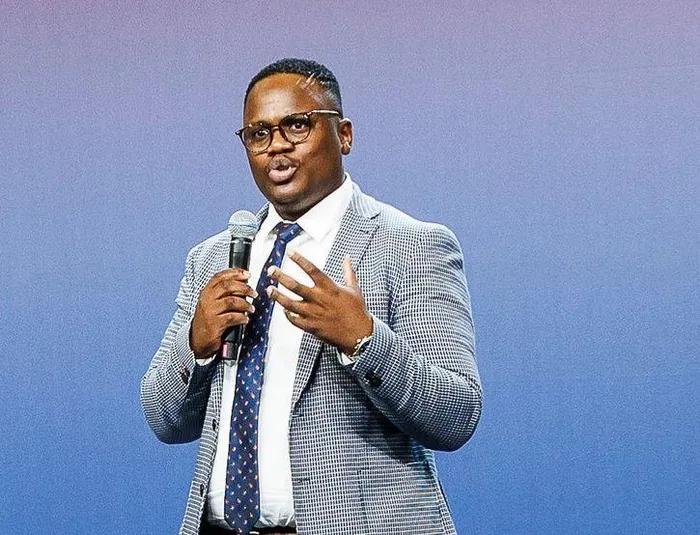Why we shouldn’t be hypnotised by the 6G hype

If the goal is to bridge South Africa’s digital divide, 6G is not the answer, says the author.
Image: File
When 5G first arrived, it was hailed as the technology that would reinvent our lives. We were told to imagine remote surgery performed across continents, cars driving themselves on city streets, and factories humming with robotic precision, all powered by near-instantaneous connections.
In South Africa, headlines celebrated Vodacom and MTN switching on their first towers in 2020, and the excitement was infectious. This was meant to be more than just faster downloads, it was the dawn of a new digital era. Five years later, the revolution still hasn’t shown up. The 5G bars on our phones rarely translate into transformative experiences.
In reality, the technology has been more evolutionary than revolutionary. The hype ran ahead of the reality.
Why 5G Fell Short
Part of the problem lies in the infrastructure. Most of the world, including South Africa, still runs on what’s called Non-Standalone 5G, in simple terms, a 5G layer sitting on top of old 4G networks. The real breakthroughs, such as network slicing (dedicated “slices” of the network for hospitals, factories, or even a football stadium on match day), remain largely absent because they require full 5G Standalone networks. The other problem is cost. 5G doesn’t run on a handful of giant towers like 2G and 3G did. It requires a dense forest of base stations, particularly at high frequencies, and each one costs money to install, power, and maintain. Globally, it’s estimated that $275 billion needs to be poured into 5G infrastructure.
For South African operators still recovering from spectrum auctions and economic slowdown, the business case for blanketing rural areas or townships with 5G is weak. Simply put, the returns don’t justify the investment.
Spectrum: The Invisible Battleground
Behind the buzzwords lies the quiet politics of spectrum, the invisible airwaves our devices depend on. Spectrum isn’t bought and sold at whim; it is managed through painstaking negotiations under the International Telecommunication Union (ITU) and decided at the World Radiocommunication Conferences (WRCs).
At WRC-2023 in Dubai, governments agreed on a roadmap towards IMT-2030, the framework for 6G. They identified potential new bands, 4.4 to 4.8 GHz, 7.125 to 8.4 GHz, and 14.8 to 15.35 GHz, for study before final decisions at WRC-2027. In theory, these frequencies will unlock the breathtaking speeds of 6G. In practice, they are years away from being harmonised and allocated nationally. This is important, because spectrum fights aren’t technical, they’re political.
Europe is already anxious about falling behind the US and China in 6G leadership, precisely because of spectrum allocation. For South Africa, still catching up on 4G coverage in rural Eastern Cape or Limpopo, the global race for 6G feels distant and detached.
6G: Déjà Vu All Over Again
Yet, here we are again, being promised miracles. If 5G was supposed to connect people, 6G is marketed as the technology that will connect senses, bodies, and even thoughts, holograms, digital twins, and fully immersive metaverses. It’s an alluring vision, but it sounds suspiciously like the 5G promises dusted off and repackaged. Here’s the truth: for an ordinary cellphone user, speeds above 10 Gbps don’t add much. Your video streams, gaming, Zoom calls, even high-definition virtual reality all function perfectly well within that ceiling. Beyond it, the main beneficiaries are OEMs, who sell us new handsets, and telcos, who market new packages. Consumers rarely see commensurate benefits.
A Brief History of Generations
To understand this cycle, it’s worth stepping back.
- Dial-up internet squealed through copper lines in the 1990s.
- 2G (GSM) arrived mid-90s in South Africa, courtesy of Vodacom and MTN, who were handed spectrum under conditions meant to expand coverage.
- 3G in the 2000s promised mobile video but delivered mostly better browsing.
- 4G/LTE around 2011 brought the real step-change, streaming, social media, mobile apps.
- 5G in 2020? Marginal improvements, high cost, patchy coverage.
Every generation has been marketed as a revolution. Every generation has mostly benefitted telcos and equipment manufacturers first, and the public only gradually.
South Africa’s Connectivity Reality
South Africa’s story is even more complicated. Our telecoms history is rooted in inequality. Telkom was given a state-sanctioned monopoly in the 1990s in exchange for rollout targets, while Vodacom and MTN enjoyed access to spectrum under conditions that critics argue were “effectively free.” The result? Two decades later, we still battle patchy rural connectivity. This explains why telcos haven’t rushed to put 5G into Ndabakazi, Qumbu, or Giyani. Average revenue per user (ARPU) in these areas is low.
Fibre and Fixed Wireless: The Real Revolution
This brings us to a crucial point. If the goal is to bridge South Africa’s digital divide, 6G is not the answer. Fibre and fixed wireless are. Fibre to the home delivers stable, high-speed internet. Fixed wireless can connect schools, clinics, and community centres quickly and reliably. These technologies lack the glamour of a new “G,” but they deliver tangible benefits where it matters most. In fact, if South Africa spent the next decade trenching fibre in townships and rolling out fixed wireless in rural areas, the impact would far outweigh whatever 6G might bring in the 2030s.
The Real Question
So, should we be excited about 6G? Absolutely, at the level of research, international cooperation, and long-term planning. But should we, as citizens, as policymakers, as everyday users, be hypnotised by the hype? Absolutely not. The lesson from 5G is simple: hype does not equal impact. If South Africa truly wants to bridge the digital divide, our priorities must be fibre to homes, fixed wireless to communities, and affordable spectrum policies that incentivise rural rollout. 6G may one day arrive in Johannesburg and Cape Town, but for the millions of South Africans still buffering on 3G, the more urgent revolution lies in the cables we dig, not the clouds we chase.

Luvo Grey, Secretary General of the Progressive Blacks in ICT
Image: Supplied
Luvo Grey, Secretary General at Progressive Blacks In ICT (PBICT) and Managing Director at EC Internet
*** The views expressed here do not necessarily represent those of Independent Media or IOL
BUSINESS REPORT